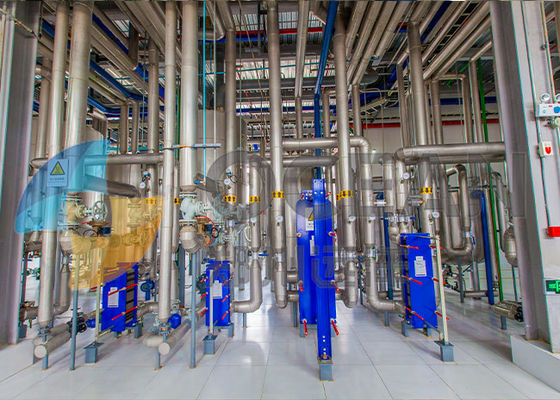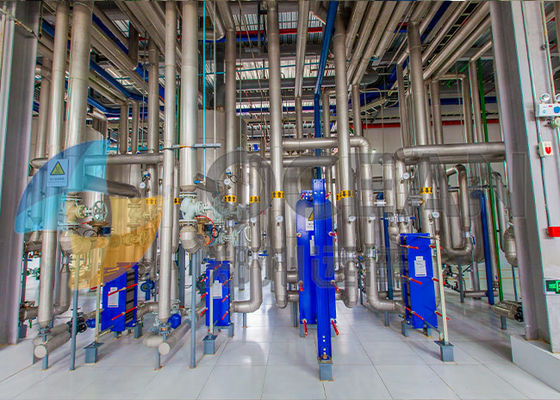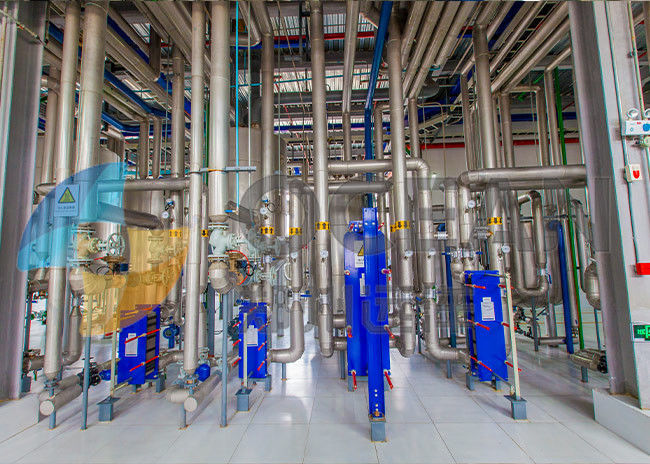Chemical And Physical Oil Refining Equipment Crude Oil Refinery Plant
Why Oil Refining
1. Oil refining usually refers to the refining of crude oil. Harmful impurities in the crude oil not only affects the oil’s value and storage, but makes further processing difficult as well. The purpose of oil refining is to remove harmful impurities, such as cotton phenols, proteins, phospholipids, water, etc., to enhance the storage stability of oils and improve flavour and color.
2. Our process features are producing 30-1500 TPD crude oil and eliminating chemical pollution and preventing the formation of trans fatty acids (TFA) in an efficient manner. Various refining processes are used depending on the type of crude oil.
3. Refining methods:
Physical refining
Chemical refining
Physical + Chemical Refining
Process of Oil Refining
1. Degumming and Neutralization
Refers to a quantity of hot water or dilute alkali, salt and phosphoric acid is added to the crude oil to allow water-soluble impurities to separate from the oil by coagulation and precipitation.
According to clients’ need, we use flexibly process to adjust the specific types and grades of crude oil and improve product yield. For high acid value oils, we suggest the physical refining process. Good quality and efficient heat exchange systems can significantly reduce the consumption of steam. Equipment is well sealed to prevent air ingress and further avoiding oxidation of the oil.
2. Decolorization
Nature oils contain different pigments so they have different colors. The high-grade oils and fats production - salad oil, oils for cosmetics, light-coloured paints, light-coloured soaps and fats for margarine - the colour has to be light and must be decolorized.
The most widely used method of decolourisation nowadays is adsorption, where certain substances with strong adsorption ability (acidic activated white clay, bleaching clay and activated carbon, etc.) are added to the oil and heating, then adsorbed to remove the colour and other impurities (proteins, mucilage, resinous and residual soap, etc.) from the oil.
The oil is heated and dried under vacuum, the adsorbent is added and the colour is effectively removed by full contact under agitation of the machine.
The oil in the neutralisation section is mixed with bleaching earth. Bleaching earth is conveyed pneumatically, effectively mitigating environmental pollution. A precise feeding system is used to quantify the bleaching clay, which contributes to precise measurement and ease of operation. The bleaching earth is then filtered out using a Yeast filter to obtain a clear oil.
The oil in the waste white clay cake is processed twice.
3. Washing and drying.
Phosphorus content: <3-5ppm/5-10ppm
After alkali refining, the oil should be washed with water and then dewatered by vacuum drying. The dried oil is cooled to 70°C before entering the following operations or storage.
4. Deodorization
Nature vegetable oil has its own distinct odor, and extra unpleasant odour is imparted to the oil during degumming and bleaching processes as well. So it is necessary to remove the odor from the bleached oil.
Oil from decoloring section is passing though degasification tank, then go into 2 bag filters before entering the deodorizer. These two methods used is to ensure completely removing the white clay. Followed with the deodorisation and deacidification take place simultaneously, and then, filter again.
In deodorization process, steam jet vacuum pump is promptly frozen by circulating cool water, which creating a high vacuum status to help carry away odoriferous matter to the barometric condenser, reduces steam consumption and waste water emission.
The whole process involves raising the temperature of the oil 3 times, and collecting VE and fatty acid at the same time.
Therefore, thanks to our advanced technology, the whole deodorisation process is environmentally friendly, and guarantee the oil quality as well.
Furthermore, based on quality of crude oil, technological parameters of the process can be flexibly adjusted to prevent formation of trans-fatty acids.
5. Dewaxing and Fractionation
Oils contain slightly wax. It will make the oil cloudy, less transparent and digestible with poor odor and taste, thus really reducing the oils’ edible quality, nutritional value and industrial value. In addition, wax is an important industrial raw material, which can be used for wax paper, waterproofing agent, gloss agent, etc.
Remove the wax from oil is very essential. Our technique use no expensive or dangerous chemical additives, no chemical reaction by-products, no losses and no effluent.
Methods: Dry fractionation: Dry fractionation: A method of fractionation in which oils and fats are cooled and crystallised and separated from crystals and liquids without additional measures. It relies on the ability of the oil itself to form crystals at different temperatures. By choosing the crystallisation conditions and separation temperature, different routes can be used to obtain a variety of different fractionated products.









 Your message must be between 20-3,000 characters!
Your message must be between 20-3,000 characters! Please check your E-mail!
Please check your E-mail!  Your message must be between 20-3,000 characters!
Your message must be between 20-3,000 characters! Please check your E-mail!
Please check your E-mail! 



